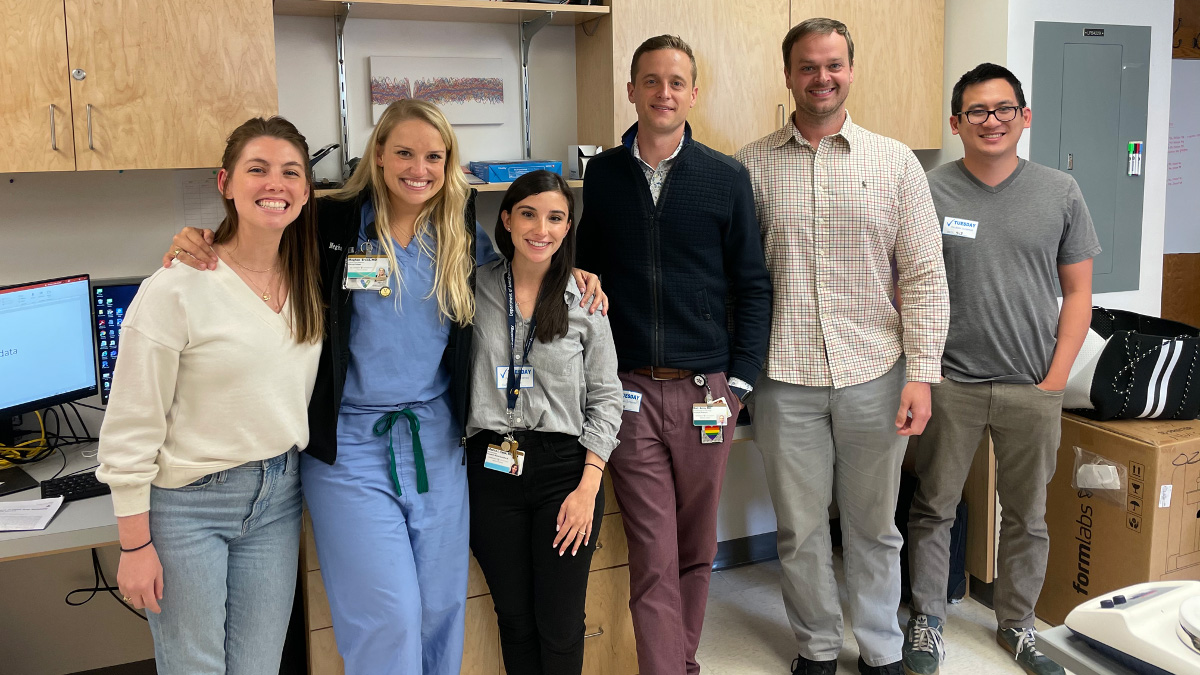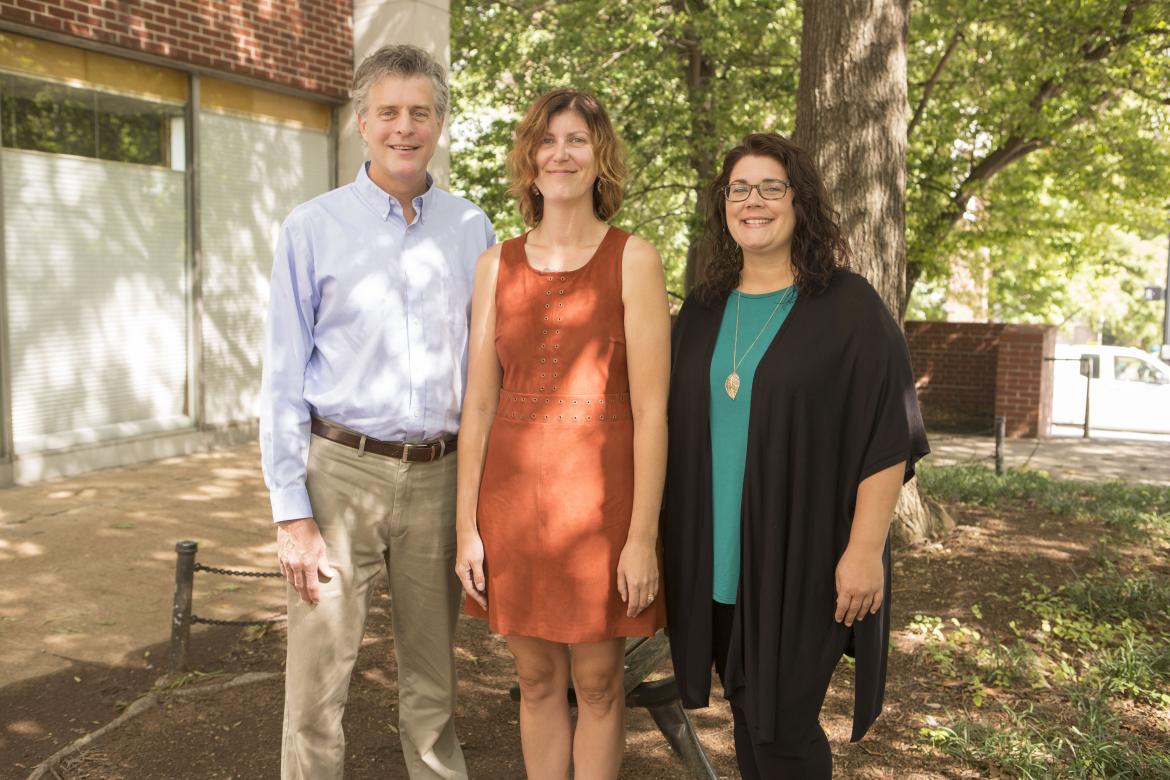The Department’s Translational Research Program focuses on 1) understanding the mechanisms of perioperative, critical care, and chronic pain morbidity and 2) performing laboratory and clinical experiments and trials to manipulate these mechanisms in order to improve patient outcomes. Key focus areas include the study of acute brain injury, acute kidney injury, vascular biology, immune function modulation in sepsis, and the transition from acute to chronic pain.
The Department’s Translational Research laboratories are supported by the National Institutes of Health and the Veterans Administration and capitalize upon Vanderbilt’s superb culture of interdepartmental collaboration and major investigative strengths in cardiovascular disease, critical care medicine, and genetics of complex human traits. Anesthesiology faculty collaborate with faculty in the departments of surgery, medicine, pediatrics, obstetrics and gynecology, pathology, and biostatistics to accomplish the research program focuses stated above.
-

The Alvis Laboratory in collaboration with the Vascular Waveform Analysis Group (VWAG) focuses on improving physiological monitoring through non-invasive venous waveform analysis (NIVA). This novel approach to monitoring has shown promise in assessing the volume state in both adults and children, as well as, shedding light on the respiratory condition in adults. Using a piezoelectric sensor on the volar aspect of a human wrist, venous waveforms are captured. Our research focuses on deconvoluting, processing, and analyzing these waveforms to investigate the patterns of the cardiac component, the respiratory component, and their respective harmonics to various volume and respiratory states. This involves human, porcine, and bench-top studies. Dr. Alvis’s lab not only conducts this translational research at VUMC, but they also support active NIVA research at multiple academic centers in the United States. Current studies include investigating venous waveforms during acute hemorrhage, sepsis, burns, atrial fibrillation, heart failure, pediatric resuscitation, pediatric hemorrhage, pediatric goal directed fluid therapy, acute respiratory distress, athletic dehydration, and acute volume overload.
Overall, the goal of the research in Dr. Alvis’s lab is to not only better understand the human volume state and respiratory condition, but to develop innovative, non-invasive technology that will bring better monitoring to patients and their clinicians.
-

The Billings’ Laboratory focuses on developing new therapy for perioperative organ injury by conducting clinical trials and evaluating mechanisms of surgery-induced organ injury. Broadly this includes studying and manipulating the patient response to acute surgical stress to reduce morbidity, but specifically we are investigating the impact of perioperative oxidative damage as a mechanism of acute kidney and brain injury in patients having surgery.
To decipher mechanisms of perioperative organ injury and advance the care of patients having surgery, we conduct clinical trials of novel treatments and measure the impact of these treatments on candidate pathways (mechanisms) of injury, organ injury, and patient-centered outcomes.For example, our 445 subject angiotensin converting enzyme inhibition or aldosterone antagonist randomized clinical trial to prevent acute postoperative atrial fibrillation demonstrated that intraoperative oxidative injury, as opposed to acute inflammation or anti-fibrinolysis, independently predicts postoperative acute kidney injury (AKI) and that perioperative statin use was associated with a decreased incidence of AKI. Based on those findings, we designed and completed the 653 Statin AKI Cardiac Surgery RCT, testing the hypotheses that short-term, high dose, perioperative atorvastatin reduces oxidative stress and AKI compared to placebo. We noted that isofurans – products of arachidonic acid peroxidation preferentially formed in conditions of relatively high oxygen tension – increased to a greater extent during surgery than F2-isoprostanes, the gold standard marker for quantifying oxidative injury in vivo. Tissue oxygen tension may be increased in vivo for two reasons, decreased consumption, as has been observed in patients with dysfunctional mitochondria, or increased delivery, as is typical among mechanically ventilated patients receiving supplemental oxygen in the operating room or ICU. We are exploring both possibilities.
To assess the effect of mitochondrial function on postoperative kidney, brain, and heart injury, we have measured mitochondrial DNA copy number, arterial lactate pyruvate ratios, and leukocyte PGC1alpha mRNA expression in patients undergoing cardiac surgery and have discovered that intraoperative mitochondrial dysfunction predicts postoperative AKI and delirium and that these markers of mitochondrial dysfunction are associated with increased concentrations of isofurans. To assess the effect of excess oxygenation we designed and initiated the Risks of Oxygen during Cardiac Surgery (ROCS) trial to test the hypothesis that physiologic oxygenation (normoxia) decreases the production of reactive oxygen species, oxidative damage, and organ injury compared to hyperoxygenation (hyperoxia).
The effect of oxygen administration during surgery is a major interest of the Billings’ Laboratory. In addition to the ROCS trial, the lab is designing a cluster-randomized, cluster-crossover pragmatic multicenter clinical trial to test the hypothesis that intraoperative normoxia or hyperoxia oxygenation targets affect kidney, brain, heart, and lung organ injury. Dr. Billings was recently awarded a seed grant from the Association of University Anesthesiologists to develop this project and will be submitting a proposal for a large grant to fund this trial, Intraop Ox, in 2019. Dr. Marcos Lopez, an assistant professor of anesthesiology in the division of critical care medicine who is in the lab, is investigating the effect of intraoperative oxygen administration on endothelial function with the support of a Foundation of Anesthesiology Education and Research Mentored Research Training Grant. He measures brachial artery flow mediated dilation and peripheral artery tonometry prior to surgery and at ICU admission and endothelial-dependent and -independent vasorelaxation in arterioles harvested from mediastinal fat in patients randomly assigned intraoperative normoxia vs. hyperoxia.
-

The work in Dr. Bruehl’s lab is focused on the general topic of pain and pain management. For the past several years, a key focus of his lab has been on understanding various factors (e.g., natural opioid system function, psychosocial status) that may influence the benefits versus risks experienced when receiving opioid analgesic medications for pain management. Ongoing work is evaluating whether aerobic exercise training reduces chronic back pain by enhancing natural opioid systems (endogenous opioids), and is testing whether exercise-related endogenous opioid enhancements can reduce the dosage of opioid analgesic medication required to achieve adequate pain management. Dr. Bruehl’s lab is also collaborating with other researchers to better understand the impact of genetic factors on both the analgesia and side effects experienced when receiving opioid analgesic medications.
Another key focus of the Bruehl lab is on evaluating whether oxidative stress occurring during total knee arthroplasty surgery (TKA) contributes to chronic pain that occurs in a subset of patients after TKA, with a particular focus on the condition known as Complex Regional Pain Syndrome.
Dr. Bruehl’s lab also continues to investigate how chronic pain alters cardiovascular function and impairs normally adaptive interactions between the cardiovascular and pain regulatory systems. This work seeks to better understand the causes of increased hypertension risk in chronic pain sufferers.
Finally, work in the Bruehl lab has extensively evaluated the impact of anger-related factors on both acute and chronic pain, and has explored the role of endogenous opioids in observed relationships between emotional regulation and pain responses.
Overall, the goal of the research in Dr. Bruehl’s lab is to better understand the psychophysiological factors contributing to chronic pain and its related health risks, and ultimately, to improve treatment of chronic pain while mitigating against the risks associated with regular opioid analgesic use.
-
Dr. Susan Eagle is a Professor of Anesthesiology and Associate Vice Chair for Faculty Affairs in the Department of Anesthesiology. She is a practicing adult and pediatric cardiothoracic anesthesiologist and is board certified in anesthesiology and transesophageal echocardiography.
The Eagle Lab has co-invented and developed several novel mHealth/wearable devices and algorithms for hemodynamic monitoring of cardiovascular and respiratory illness, including Peripheral Intravenous Waveform Analysis (PIVA) and Non-Invasive Venous Waveform Analysis (NIVA). She co-founded and served as both CMO and CEO of two startup companies to develop these devices and technology. An additional current focus is the use of novel echocardiographic technologies to detect left atrial appendage thrombus. The lab researches and develops these technologies using large animal models, controlled human studies, and clinical patients. Several of her mHealth devices have received national awards, including awards from the Southeastern Medical Device Association, the National Collegiate Inventors and Innovators Alliance, NEXT, and Google Entrepreneurs. Dr. Eagle’s physician and engineer teams and their research is supported by the National Institutes of Health, the National Science Foundation, and the American Heart Association. Dr. Eagle has used her passion for faculty develop to mentor several Faculty members to develop independently funded research programs in device research and development.
Dr. Eagle has several patents around her technology and has licensed intellectual property to multinational medical device companies. She has successfully transitioned two of her novel medical devices from inception through Food and Drug Administration (FDA) clearance, via both de novo and 510(k) pathways. She is currently developing wearable devices for areas of imminent need, including cardiac failure and severe respiratory illnesses caused by SARS-CoV-2.
-
Dr. Stone’s lab is focused on understanding mechanisms which contribute to pediatric pain outcomes in order to improve pediatric pain interventions. As a pediatric psychologist, Dr. Stone approaches pediatric pain from a biopsychosocial perspective, with a specific focus on the dynamic relation between parent and child factors. Studies in the lab often take an intergenerational approach to understanding pain and related outcomes.
Click here to access the website for the Pain Research Group and learn more about Dr. Stone’s current work.